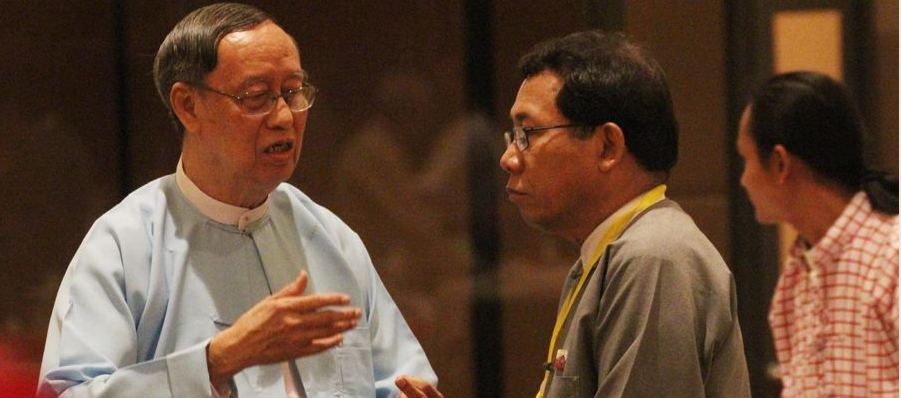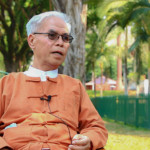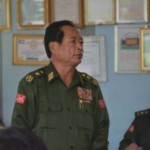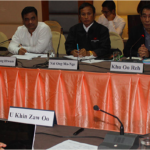By Angshuman Choudhury / The Irrawaddy | May 12, 2017
Less than a month before the commencement of the second 21st Century Panglong Conference (21CPC), the Union government of Myanmar faces an unprecedented situation. Both the Kachin Independence Organization (KIO) and the Wa National Organisation (WNO) have resigned from the United Nationalities Federal Council (UNFC). Another Ethnic Armed Organization (EAO) – the Shan State Progressive Party (SSPP)/Shan State Army-North (SSA-N) – is at the threshold of exiting this crucial alliance.
So far, the dealings between the government in Nay Pyi Taw and those EAOs that had not signed the Nationwide Ceasefire Accord (NCA) were fairly single-track, courtesy of the UNFC. The existence of this influential cluster of non-signatories made the dialogue process convenient for the government’s Peace Commission, in a situation where the latter had to talk to almost ten core negotiating parties in order to expand the ceasefire. The situation now appears to have radically changed, with the definitive entry of the United Wa State Army (UWSA). This powerful group recently instituted a separate dialogue channel known as the ‘Union Political Negotiation Dialogue Committee (UPNDC),’ bringing on board six other non-signatory EAOs.
How decisive or significant is this new approach to reconciliation?
It is worth noting that the EAOs that are a part of the UPNDC, particularly the KIO/KIA, MNDAA, and UWSA, are all heavily armed and command strong influence in their respective ethnic quarters. In fact, the UWSA happens to be the largest EAO in the country. Moreover, the Union government’s reputation among the frontier populations has only waned over the past six months, thanks to relentless offensives by the military and a perception of political isolation from the revamped Panglong process. State Counselor Daw Aung San Suu Kyi’s recent visit to IDP camps in Kachin State was a half-drawn attempt to rebuild this lost trust. A new dialogue process that is based locally is expected to draw greater attention and significantly erode the limited credibility that Nay Pyi Taw currently enjoys with respect to the frontier ethnic constituencies.
In a situation where the government’s peace bureaucracy is already dealing with structural deadlocks and lax implementation of its own obligations (as mandated by the NCA), a bifurcation of the non-signatory cluster is expected to cause even more delays and lapses. The split might not only deepen the existing communication gap between Nay Pyi Taw and EAOs based in the northern states, but also expedite the dire need for effective mediators who can seamlessly pass on accurate and consistent information between the civilian government, the Tatmadaw, and the noncompliant EAOs.
The new committee also opens up newfound space for China to influence the peace process, by virtue of the UWSA’s deep-seated links with Beijing. In the past few months, China has pulled the strings on the peace process in decisive ways, mostly through backchannel negotiations with both the union government and EAOs like the Karen National Union (KNU). At the moment, Beijing’s top priority is to ensure stability along the border region so as to allow its own developmental agenda in Myanmar to flourish without disruption. To this end, the UWSA, with whom China maintains strong ties, is a potentially effective channel for conflict management.
Clearly, the most powerful EAOs in Myanmar now stand for an alternative prognosis to reconciliation that Nay Pyi Taw cannot ignore. Some questions emerge almost immediately in this regard: what to make of the government’s promise to eventually expand the NCA through the Panglong process? How would the negotiations pan out in the upcoming iteration of the 21CPC and to what end? Even if the conference makes considerable headway with respect to the NCA signatories, would not the absence of the crucial conflict actors render the whole exercise redundant? Does the government plan on establishing a permanent dialogue channel with the UWSA-led UPNDC?
For now, Myanmar’s peace process hangs in a precarious limbo.
Angshuman Choudhury is a researcher at the South East Asia Research Programme (SEARP) of New Delhi-based think tank, Institute of Peace and Conflict Studies (IPCS). He is currently conducting research on Myanmar’s ethnic peace process and has previously written about this subject for his institute. A collection of the commentaries can be found at his blog, Eleventh Column. He is also an independent journalist and filmmaker, and has written on political and conflict-related issues in South Asia Journal, Firstpost, The Huffington Post India, The Citizen, The Quint, etc. Angshuman holds a M.Sc. in Conflict Prevention and Peacebuilding from Durham University (UK).
Angshuman ChoudhuryThis article originally appeared in Tea Circle, a forum hosted at Oxford University for emerging research and perspectives on Burma/Myanmar.






